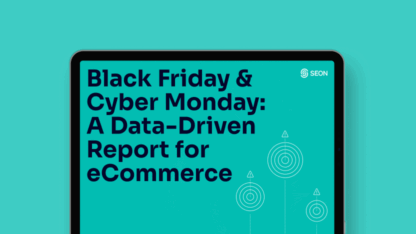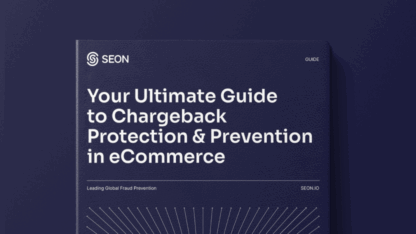Growth is the goal for every ambitious retailer. For fast-scaling eCommerce businesses, success, however, isn’t just a signal to investors and customers; it can also be a beacon for fraudsters. Global eCommerce fraud losses are projected to hit $48 billion in 2025 — a 16% increase from the previous year — and could soar to $107 billion by 2029, a 141% rise. North America remains the biggest fraud hotspot, accounting for 42% of global eCommerce fraud losses.
What many businesses overlook today is that fraud doesn’t wait until checkout to make its move. In fact, fraud begins upstream — at account creation, in login attempts, through loyalty programs, referral schemes and return processes. By the time traditional tools start looking at transactions, damage may already be done.
This leads to an uncomfortable reality: the more momentum you build, the more exposure you create. The real challenge isn’t whether fraud will become a problem. It’s when — and how — you respond. Do you pivot internally, or do you partner up?
Fraud as a Byproduct of Momentum
Fraudsters are opportunities. They don’t discriminate by vertical, but they do follow volume, value and visibility. Luxury retailers and high-growth eCommerce companies are targets for a simple reason: high average order values and rapid fulfillment models. Luxury goods fraud, for example, rose 104% in 2024.
Retailers tend to face two categories of fraud. The first is third-party fraud, where stolen credit cards or hijacked accounts are used to make unauthorized purchases. It’s a familiar story where the fraudster receives the goods, the legitimate cardholder disputes the charge and the merchant is left shouldering the cost. In 2025, the largest share of US eCommerce fraud losses was due to third-party identity and synthetic identity fraud.
The second, more insidious form is first-party or “friendly” fraud. This occurs when a real customer initiates abuse, perhaps by falsely claiming a package didn’t arrive, returning a used or damaged product for a refund or exploiting lenient policies to obtain free merchandise. These tactics often evade traditional fraud filters because the behavior technically originates from verified users. 61% of chargeback disputes in 2025 are expected to come from this form of fraud. Both forms of fraud are costly and lead to inventory loss, chargebacks, inflated customer service workloads, and, if left unmanaged, eroded margins and trust.
The Chargeback Drag
Chargebacks are becoming a billion-dollar problem. Merchants are expected to pay over $100 billion in chargebacks this year, and for every $100 in fraudulent orders, businesses lose $2-7 when factoring in chargebacks, processing fees and operational costs. Fraudulent chargebacks now account for a significant share of overall fraud costs, and 43% of eCommerce consumers have fallen victim to payment fraud, losing money through stolen card details, phishing scams, and fake refund schemes.
Beyond the internal strain, chargeback rates can trigger reputational consequences with payment providers. If those rates rise too high, merchants may face increased transaction fees or find themselves placed in costly monitoring programs. These penalties compound quickly, making fraud prevention not just a risk mitigation issue but a revenue protection imperative.
Facing the Inflection Point
When fraud starts trending upward alongside revenue, retailers make certain choices. One option is to build internal defenses. This means hiring dedicated fraud specialists, investing in detection software, training cross-functional teams and embedding fraud workflows across customer touchpoints. It’s a viable path, but one that demands time, budget and sustained strategic focus — three resources that high-growth companies rarely have in surplus.
The alternative is to partner. Working with experienced fraud prevention providers gives retailers immediate access to industry best practices, scalable technologies and deep data intelligence. This approach allows internal teams to focus on customer acquisition, product innovation and logistics — while trusting experts to monitor and manage fraud at scale.
There’s no universally correct answer. But what matters most is timing. Many brands wait until fraud has already affected margins, slowed fulfillment or created a PR headache before making a move. At that point, reactive measures may no longer be enough.
Identity is the New Perimeter
Fraud prevention isn’t just about blocking suspicious transactions — it’s about understanding identity in all its complexity. In today’s environment, where fraudsters increasingly use AI to mimic real behavior and generate synthetic identities, verifying who’s behind the screen is more urgent — and more difficult — than ever.
The rise in deepfake scams, up by 28% in 2024, and AI-generated fraud across web, mobile, and even social channels, underscores the urgent need for adaptive defenses. Fraud tactics are dynamic, fast-moving and often invisible to traditional verification methods. As a result, biometric authentication and behavioral analysis are stepping in where passwords and knowledge-based checks fall short. But the real power lies in data enrichment: the ability to analyze digital signals such as device configuration, IP geolocation, email history and phone number legitimacy in real time.
Individually, these markers might seem trivial. Together, they form a layered understanding of who is on the other side of the screen. This intelligence enables eCommerce businesses to distinguish between genuine customers, bots and fraudsters without introducing friction. It also provides airtight evidence in chargeback disputes, whether the fraud is third-party or first-party.
By seeing the full context of a session, not just the transaction, retailers are able to gain a clearer view of intent, risk and legitimacy.
Fraud’s Business Impact
Fraud isn’t just a risk function. It’s a growth inhibitor. For eCommerce brands navigating intense competition, a single false decline or unresolved dispute can turn loyal customers into former ones. This makes fraud a company-wide concern. It touches everything from how inventory is allocated and orders are fulfilled to how brands are perceived in the market. Unchecked fraud pulls focus from strategic initiatives, forcing teams into reactive mode — investigating claims, appealing chargebacks, managing complaints and patching process gaps.
Compounding the issue, manual review has become increasingly ineffective. Despite the hours invested, only 3% of manually screened transactions are actually fraudulent. It’s no surprise that nearly two-thirds of merchants plan to reduce or eliminate manual screening altogether. The shift toward automated, intelligence-driven risk management isn’t just a trend. It’s a necessity for maintaining margin, scale and speed.
Customer expectations have changed, too. Shoppers now demand fast, frictionless experiences with the built-in assumption of security. Any breakdown — be it a fraudulent return, an account lockout or a delayed refund — has an outsized impact. In a world where convenience is table stakes, even minor frictions carry major consequences.
Fraud Is a Strategic Priority
Fraud is no longer a compartmentalized issue for risk teams to handle in isolation. It’s a strategic concern with implications for growth, trust and long-term success.
The challenge is to act early, think holistically and embed fraud prevention into the entire customer lifecycle. Whether you build those capabilities in-house or find the right partner to scale alongside you, the goal is the same: protect the business without slowing it down.
Sources
- eCommerce Losses to Online Payment Fraud Exceed $48B – Juniper Research
- eCommerce Fraud Statistics – CropInk
- The State of Fraud Management 2023 – Forrester
- Fraud Prevention in Ecommerce Report 2024-2025 – The Paypers









